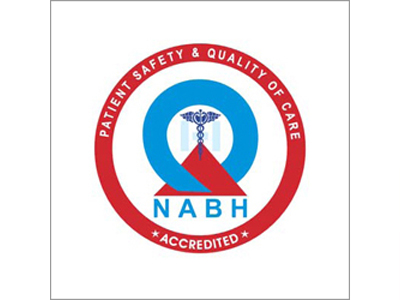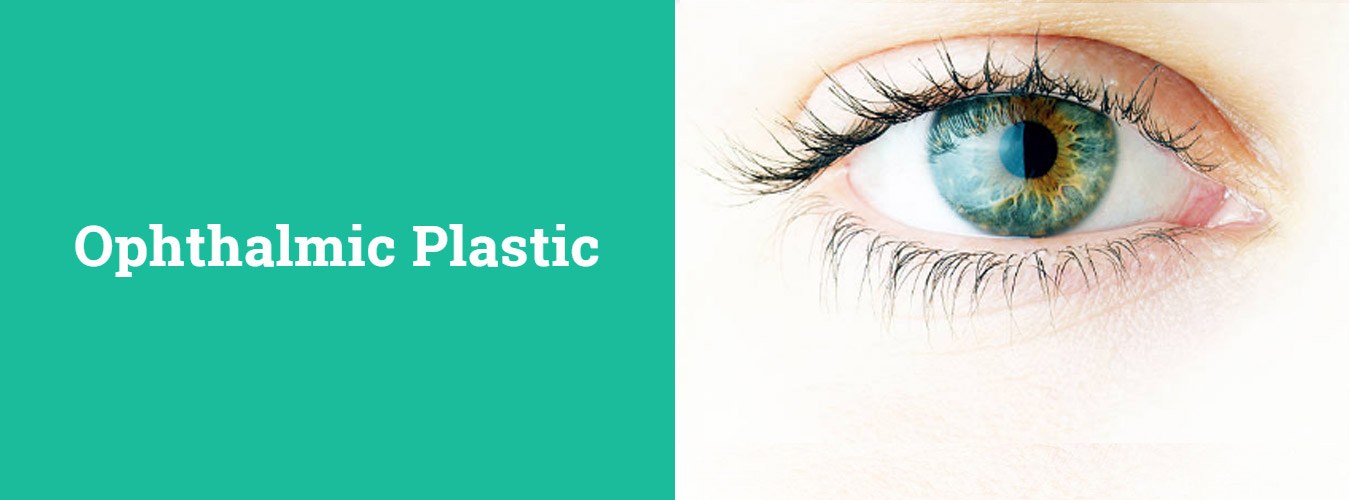Ophthalmic Plastic and Facial Aesthetic Surgery Services
Ophthalmic plastic surgery is a super-specialized branch of ophthalmology that deals with deformities, tumors, and cosmetic concerns of the structures around the eye. It is a highly specialized form of plastic surgery that is so close to the eye that you would want to trust an Oculoplastic surgeon, who is an eye microsurgeon as well as a trained plastic surgeon. It has grown in leaps and bounds in the recent past across the globe, and LV Prasad Eye Institute has been a pioneer at the cutting edge of this subject. Today, we have 4 internationally trained Oculoplastic surgeons in our team. Which is why, our department leads as a tertiary care centre not only within the country, but in Asia.
Eye and facial plastic surgery can change your life by enhancing your features, restoring normalcy, rejuvenating your appearance, and most importantly, boosting your self-esteem!
Combine a group of 4 well trained ophthalmic plastic surgeons with extensive national and international training, with state-of-the-art facilities at the LV Prasad Eye Institute ... and what you have, is the safest and best way to get the desired results!
Know more about eye plastic surgery
- The LVPEI Advantage
- Reconstructive Eye Plastic Surgery
- Droopy Eyelid (Ptosis)
- Eyelid Malpositions
- Facial Spasms
- Thyroid Eye Disease
- Injury and Facial Fractures
- Dacryology: Treatment for the Watering Eye
- Orbitofacial Prosthesis: Cosmetic Artificial Eyes
- Cosmetic Surgery of Eyelids and Face
The LVPEI Advantage
Ophthalmic plastic surgery is a super-specialized branch of ophthalmology that deals with deformities, tumors, and cosmetic concerns of the structures around the eye. It is a highly specialized form of plastic surgery that is so close to the eye that you would want to trust an Oculoplastic surgeon, who is an eye microsurgeon as well as a trained plastic surgeon. It has grown in leaps and bounds in the recent past across the globe, and LV Prasad Eye Institute has been a pioneer at the cutting edge of this subject. Today, we have 4 internationally trained Oculoplastic surgeons in our team. Which is why, our department leads as a tertiary care centre not only within the country, but in Asia.
Here are some of the top reasons why our patients choose to get treated at LVPEI:
Reconstructive Eye Plastic Surgery
Reconstructive surgery primarily involves correction of eyelid, facial and orbital deformities that resulted from a birth defect, injury, or removal of a tumor. It also includes management of tumors around the eye which need specialized care and reconstruction.
LVPEI provides exceptional Oculoplastic, eyelid and facial reconstructive surgery to patients of all ages and offers the most advanced and innovative techniques of facial and eyelid surgery for such conditions.
The team of doctors at LVPEI has the experience in handling standard as well as complex reconstructive challenges. They are known for their innovative techniques that modify traditionally described procedures to achieve better results in an aesthetically pleasing manner.
To learn more about reconstructive procedures, we invite you to browse through the sub-menus on this page, or simply Ask a Query for more information.
Droopy Eyelid (Ptosis)
Droopy eyelid (ptosis) can occur as a result of birth defect, injury, muscle disorder, nerve disorder, or simply due to aging. It gives a sleepy appearance, and can even obstruct vision if severe. Ptosis may also cause excessive forehead wrinkling, abnormal head posture such as chin elevation, and eye fatigue. In children below 8 years of age, severe droop might obstruct development of vision leading to a lazy (amblyopic) eye thus reducing vision. In adults, droopy eyelid is mainly a cosmetic concern. Surgery can correct this problem by repairing the muscle that lifts the eyelid. Several surgical options are available, and the type of surgery used depends upon the severity of the droop. After evaluation, your specialist will decide which surgery best suits your need. Health insurance will cover the costs of ptosis surgery, if it was acquired later in life. Any congenital deformity (present since birth) is not covered by insurance.
Eyelid Malpositions
Eyelid malpositions are abnormal positions of the eyelid, leading to inturning or out turning of the eyelid. This can be a birth defect, or secondary to injury or aging. Eyelid malpositions are common, and often lead to watering, light sensitivity, and even a cosmetic blemish. Eyelid malpositions can be corrected with eyelid plastic surgery, and are covered by insurance.
Facial Spasms
The muscles of facial expression and the eyelid are normally under our voluntary control. Facial spasm is a condition in which these muscles function abnormally and are no longer under the direct control of the brain. It can affect the entire face, or just the area around the eyes. Four distinct forms of facial spasm are known: Benign Essential Blepharospasm, Hemifacial spasm, Meige syndrome, and Myokimia. Though the actual problem within the nerve is not fully understood and cannot be cured, its effect on facial muscles can be controlled by injections of Botulinum toxin, a 10 minute out patient procedure.
Thyroid Eye Disease
Thyroid eye disease (a condition of Graves’ disease or hyperthyroidism) causes the eyes to bulge forward and the eye aperture to widen. It can lead to double vision, swelling around the eyes, discomfort, and in severe cases loss of vision. The initial (active) phase of thyroid eye disease involves frequent swelling of tissues around the eyes, double vision, and even reduction in vision in severe cases. Active phase is treated with medications (commonly Steroids) to reduce the swelling. Fortunately, the active phase of most thyroid eye disease patients ends in 18-24 months. However, the deformities (raised eyelid, prominent eyeball, or squint) may persist, and require surgery in the second (inactive) phase.
Decompression surgery, eyelid surgery, and eye muscle (squint) surgery is performed during the inactive phase. Your specialist will evaluate you t ofind out which phase you are in, and plan your treatment accordingly. Health insurance will cover the costs of medical treatment and reconstructive surgery for thyroid eye disease.
Injury and Facial Fractures
When injuries or accidents happen, patients are often rushed to multi-specialty hospitals. However, once life-threatening injuries are stabilized, or absent, immediate attention to the face, and particularly the eye region is important. Trauma can affect any structure of the eyelid, eyeball and the surrounding bones (fractures) depending upon the mechanism and force of injury. Eyelid is a delicate and important structure, and if injured, needs meticulous placement of stitches to preserve its normal shape and function. Injury to the tear ducts (canaliculus) within the eyelids require special placement of silicone tubes within them to keep them open while the injured eyelid heals. Fractures of the bone surrounding the eye (orbital walls) may cause the eye to sink back into its socket, lead to a facial deformity, poor eye movement, or loss of vision. More extensive injuries to facial bones may require a maxilla-facial surgeon to be one of the trauma team member.
A thorough examination is required to find out if the eyeball and surrounding structures are injured. This has to be followed by immediate repair of injured tissues by multispecialty approach by more than one eye specialist. The outcome of trauma repair entirely depends upon extent and severity of injury. Treatment may be needed in stages, and healing may continue for months. Health insurance will cover the costs of trauma repair.
Dacryology: Treatment for the Watering Eye
Dacryology deals exclusively with watering of the eyes and disorders of the tear drainage. Any disorders affecting this system can lead to impaired tear flow with resultant watering, infections (Dacryocystitis) and sometimes even orbital infections. At LVPEI, the tear duct is evaluated thoroughly not only from the eye side, but also through the nose. We use Dacryoendoscopy techniques to diagnose problems within the tear duct passage. LVPEI has a state of art Dacryology set up with High-definition endoscopic visualization, self irrigating endoscopes, latest Medtronic® consoles and Synthes® Ultrasonic burrs which are the latest and safest techniques in this field.
DCR or dacryocystorhinostomy is a surgical procedure that creates an alternate new pathway for irreversible tear duct obstruction, thereby relieving watering. It can be performed via skin approach, or through the nose using special endoscopes. Tear duct surgeries are covered by Insurance.
Orbitofacial Prosthesis: Cosmetic Artificial Eyes
Visual impression is the first and often a lasting impression about a person. The face, especially the eyes, largely conveys this impression. Injury as well as, certain disorders such as Cancers can lead to loss or removal of an eye. While the vision cannot be restored, the appearance can be brought back to near normal, by customized artificial eyes (prosthesis).
An artificial eye is a prosthesis or a device that fits within the socket, behind your eyelids. It mimics the natural eye, and is painted exactly like your natural eye. Insertion and removal is easy, and one has to clean it once a month. The eyelids can comfortably close on the artificial eye, giving it a natural look. Occasionally, if the pouch behind the eyelid (that holds the artificial eye) is shrunken, one may require a surgery prior to the fitting of an artificial eye.
With a 2-day process involving sizing, fitting and artistic painting, you are ready to have a new natural look, and walk back into the world with confidence!
Cosmetic Surgery of Eyelids and Face
'Facial Aesthetics' involves surgical as well as non-surgical cosmetic treatments for facial Rejuvenation. It offers procedures that make you look younger or rejuvenated to reflect the internal you!
Today, facial plastic surgery is not just for the elite, but has an increasing demand in India, and Asia at large! When it comes to choosing a plastic surgeon for your “face”, it is critical to choose a specialist in eyelid surgery and facial surgery.
You are lucky, to live in an era where advances and innovations in facial plastic surgery and rejuvenation are at its peak. However, choosing the right clinician to deliver that for you is most critical! A combination of facial cosmetic surgery training from one of the best institute in the world (UCLA), the excellent team work and back-up of the prestigious LV Prasad Eye Institute in Hyderabad, and the accumulated experience in this field allows us to promise you the most aesthetic and natural looking results. And when it is about your face, you'd rather rely on someone who does 'only' facial aesthetics!
Primary training in Ophthalmology brings in all the concepts of micro-incisions, fine suturing and working under microscopes. This comes as an advantage in cosmetic surgery. Moreover since majority of aging changes occur around the eyes, an ophthalmic plastic surgeon can better address these issues through hidden incisions behind the eyelid.
You are most welcome to directly contact us for more specific information








































